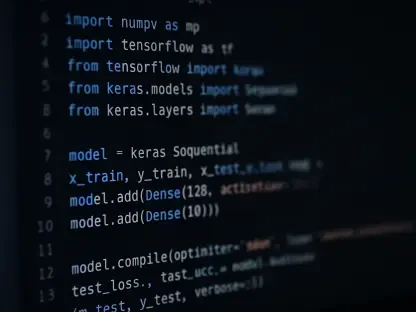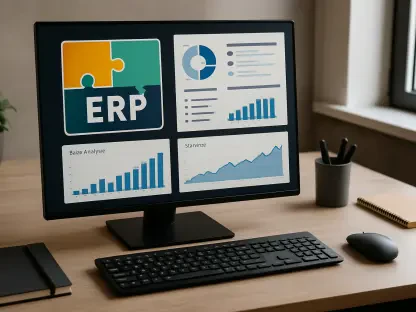Purpose of This GoLand 2025.2 Review
In the fast-paced realm of software development, selecting the right tools can significantly impact productivity, especially for developers working with Go, a language renowned for its efficiency in building scalable applications. This evaluation of GoLand 2025.2 aims to dissect its capabilities as a specialized Integrated Development Environment (IDE) tailored for Go programming, determining if it meets the high standards expected by modern coders. The focus rests on assessing whether this IDE delivers value that justifies its cost for professionals seeking enhanced coding speed and robust project management.
The analysis also explores how GoLand 2025.2 addresses critical needs such as streamlined debugging and support for expansive codebases, elements vital for tackling complex projects. By delving into these aspects, the goal is to provide clarity on its suitability for various development scenarios. This review holds particular relevance for developers in search of a premium tool designed specifically for Go, offering insights into whether it stands as a worthy investment in the current landscape.
Overview of GoLand 2025.2 Features and Design
GoLand 2025.2, developed by JetBrains, emerges as a dedicated IDE crafted exclusively for Go development, positioning itself as a comprehensive solution for programmers. It boasts an array of core functionalities, including AI-driven code suggestions that anticipate developer needs, sophisticated debugging tools for pinpointing issues, and integrated testing frameworks that simplify quality assurance. Additionally, full compatibility with the latest Go versions, such as 1.24, ensures that users remain at the forefront of language advancements.
The design philosophy behind this IDE centers on serving as an all-in-one platform for professional developers, with standout features like seamless integration with Go modules for dependency management and intuitive project organization tools. These elements cater to the demands of building and maintaining intricate applications. Its premium nature is evident in the polished interface and the depth of customization available, distinguishing it from lighter, more generic coding environments.
This tool is particularly geared toward handling large-scale applications, where precision and efficiency are paramount. As a paid IDE, it targets users who require advanced capabilities beyond what free alternatives offer, embedding features that streamline workflows in demanding development contexts. Such a focus underscores its appeal to teams and individuals committed to high-stakes Go projects.
Performance Evaluation of GoLand 2025.2
When put to the test in real-world development scenarios, GoLand 2025.2 demonstrates notable strengths in operational efficiency. Its speed and responsiveness stand out, even when managing extensive codebases, allowing developers to navigate and edit projects without frustrating delays. This performance proves essential for maintaining momentum during intensive coding sessions.
Further scrutiny reveals the accuracy of its code suggestions, powered by AI, which often predict and complete code snippets with remarkable precision, reducing manual input errors. The debugging tools also impress with their ability to isolate and resolve issues swiftly, a critical factor in minimizing downtime. Handling large codebases feels intuitive, thanks to a well-organized interface that keeps complex projects manageable.
However, resource consumption emerges as a point of consideration, as the IDE demands substantial system power, potentially challenging users with less robust hardware. Compatibility across various setups varies, with optimal performance seen on high-spec machines, while older or lower-end devices might experience sluggishness. This aspect shapes a practical understanding of where and how this tool can be most effectively deployed.
Strengths and Weaknesses of GoLand 2025.2
Among the prominent advantages of GoLand 2025.2 is its comprehensive suite of Go-specific features, tailored to enhance every stage of development from coding to deployment. The robust support for professional workflows, including version control integration and refactoring options, empowers developers to maintain high standards in their output. Additionally, the cutting-edge AI assistance significantly boosts productivity by automating repetitive tasks and offering intelligent insights.
On the downside, the paid subscription model may pose a barrier for budget-conscious developers or hobbyists who prioritize cost over advanced functionality. The higher system resource demands also limit its accessibility, particularly for those operating on modest hardware setups where performance could be compromised. Such drawbacks necessitate a careful evaluation of whether the benefits align with individual or team financial and technical constraints.
These strengths and weaknesses directly influence the IDE’s suitability across different user profiles and project types. For large teams or enterprises tackling sophisticated applications, the advantages often outweigh the costs, while solo developers or small projects might find the price and resource needs less justifiable. This balance shapes the decision-making process for potential adopters.
Final Assessment and Recommendation
Summarizing the insights gathered, GoLand 2025.2 presents a compelling package with its superior performance, extensive feature set, and specialized focus on Go development, though tempered by certain limitations like cost and hardware demands. The IDE excels in environments where complexity and scale are defining factors, delivering tools that streamline critical tasks. Its drawbacks, while notable, do not overshadow the value it provides to the right audience.
The recommendation hinges on specific use cases: for professional teams or developers engaged in intricate, large-scale projects, this IDE emerges as a worthwhile investment. Its advanced capabilities justify the expense in scenarios where efficiency and precision are non-negotiable. However, for those with simpler needs or tighter budgets, exploring alternative tools might be more prudent.
Particular scenarios where GoLand 2025.2 shines include enterprise-level applications and collaborative environments requiring robust debugging and testing frameworks. Developer profiles that benefit most are those with experience in Go who demand a tool that keeps pace with their expertise. This targeted applicability reinforces its position as a top-tier choice in the right context.
Closing Thoughts and Practical Advice
Reflecting on GoLand 2025.2’s role within the Go development ecosystem, it stands as a formidable option among premium IDEs, catering to a niche of high-end users seeking specialized functionality. Its integration of modern technologies like AI and comprehensive language support cement its relevance in a competitive field. This positioning highlights its importance for those prioritizing cutting-edge tools over cost considerations.
Practical guidance points toward specific beneficiaries, such as experienced developers or enterprises requiring advanced solutions for complex workflows. Teams managing extensive Go applications will find its feature depth particularly advantageous. For such users, the IDE’s capabilities align seamlessly with the need for efficiency and scalability.
Before adoption, considerations like subscription costs, hardware specifications, and the potential learning curve associated with mastering its extensive features should be weighed. Ensuring that system resources meet the IDE’s demands is crucial to avoid performance hiccups. Additionally, evaluating the tool through a trial period could provide firsthand insight into its fit for personal or organizational needs, paving the way for an informed decision.









